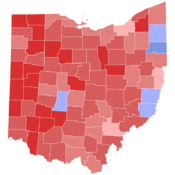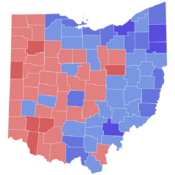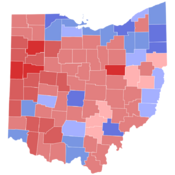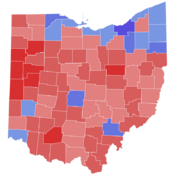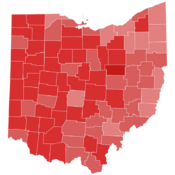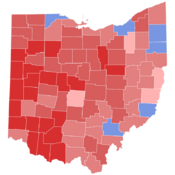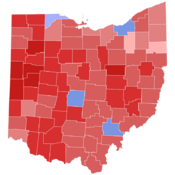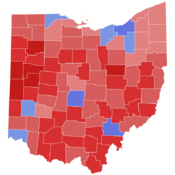List of United States Senate elections in Ohio facts for kids
When people in Ohio choose someone to represent them in the United States Senate, it's called a United States Senate election. Ohio has two special spots, or "seats," in the Senate, as allowed by the U.S. Constitution. These elections usually happen on Election Day, along with other important votes for leaders at the national, state, and local levels.
Each state gets two U.S. Senators. They serve for six years, but their terms are "staggered." This means they don't both get elected at the same time. The Senate is split into three groups, called "classes." This way, about one-third of the Senators are up for re-election every two years. When Ohio became a state in 1803, it got one seat in Class 1 and another in Class 3. The first elections for these seats were held in 1803.
At first, state lawmakers chose the Senators. But in 1913, the Seventeenth Amendment changed things. Since then, regular voters in each state get to directly elect their U.S. Senators. Sometimes, if a Senator leaves office early, a special election is held to pick someone to finish their term.
The next election for Ohio's Class 1 Senate seat is planned for 2024. The next election for the Class 3 seat will be in 2028.
Contents
How Ohio Elects Its Senators
Ohio's two Senate seats are part of different "classes." This means their elections happen in different years. Let's look at how these elections work for each class.
Class 1 Senate Elections
The Class 1 Senate seat in Ohio is up for election every six years. This is one of the seats that was first elected when Ohio became a state. The person elected serves a full six-year term.
Here are some of the most recent results for the Class 1 Senate seat in Ohio:
| Year | Winner | Runner(s)-up | Others | Ref | ||||||||||
|---|---|---|---|---|---|---|---|---|---|---|---|---|---|---|
| Candidate | Party | Votes | % | Candidate | Party | Votes | % | Votes | % | |||||
| 2000 | Mike DeWine | Republican | 2,665,512 | 59.92% | Ted Celeste | Democratic | 1,595,066 | 35.85% | 188,223 | 4.23% | ||||
| 2006 | Sherrod Brown | [[Democratic Party (United States)}} | | Democratic | 2,257,369 | 56.16% | Mike DeWine | Republican | 1,761,037 | 43.82% | 830 | 0.02% | |||
| 2012 | Sherrod Brown | Democratic | 2,762,766 | 50.70% | Josh Mandel | Republican | 2,435,744 | 44.70% | 250,617 | 4.60% | ||||
| 2018 | Sherrod Brown | Democratic | 2,358,508 | 53.40% | Jim Renacci | Republican | 2,057,559 | 46.58% | 1,017 | 0.02% | ||||
Class 1 County Results
These maps show how different counties in Ohio voted in recent Class 1 Senate elections.
Class 3 Senate Elections
The Class 3 Senate seat in Ohio also has elections every six years. This seat is part of a different group, so its election year is different from the Class 1 seat.
Here are some of the most recent results for the Class 3 Senate seat in Ohio:
| Year | Winner | Runner(s)-up | Others | Ref | |||||||||
|---|---|---|---|---|---|---|---|---|---|---|---|---|---|
| Candidate | Party | Votes | % | Candidate | Party | Votes | % | Votes | % | ||||
| 2004 | George Voinovich | Republican | 3,464,651 | 63.85% | Eric Fingerhut | Democratic | 1,961,249 | 36.14% | 296 | 0.01% | |||
| 2010 | Rob Portman | Republican | 2,168,742 | 56.85% | Lee Fisher | Democratic | 1,503,297 | 39.40% | 143,059 | 3.75% | |||
| 2016 | Rob Portman | Republican | 3,118,567 | 58.03% | Ted Strickland | Democratic | 1,996,908 | 37.16% | 258,689 | 4.81% | |||
| 2022 | J. D. Vance | Republican | 2,192,114 | 53.04% | Tim Ryan | Democratic | 1,939,489 | 46.92% | 1,739 | 0.04% | |||
Class 3 County Results
These maps show how different counties in Ohio voted in recent Class 3 Senate elections.
-
2004
Voinovich vs. Fingerhut -
2010
Portman vs. Fisher -
2016
Portman vs. Strickland -
2022
Vance vs. Ryan


